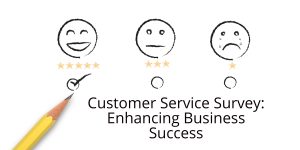In today’s highly competitive business landscape, understanding your customers and their needs is crucial for success. Customer feedback surveys are […]
Category: Customers Satisfaction
To Measure Customer Experience: Understanding the Key Metrics
To Measure Customer Experience: Understanding the Key Metrics As Business continue to evolve, one thing remains constant: customer experience is […]
Maximizing Customer Reach: A Game-Changer for Business Success
Maximizing Customer Reach: A Game-Changer for Business Success In today’s business landscape, knowing your customers inside out is a prerequisite […]
customer satisfaction survey platform
Customer satisfaction survey platform FAQs Q1: How frequently should customer service surveys be conducted? A1: The frequency of customer […]
Questionnaire For Customer Feedback
Questionnaire For Customer Feedback: How To Get The Most Out Of Your Customers’ Opinions Are you looking for ways to […]
7 Reasons Why Customer Feedback Is Important
7 Reasons Why Customer Feedback Is Important: The Key to Business Growth Introduction: As a business owner or marketer, it’s […]







